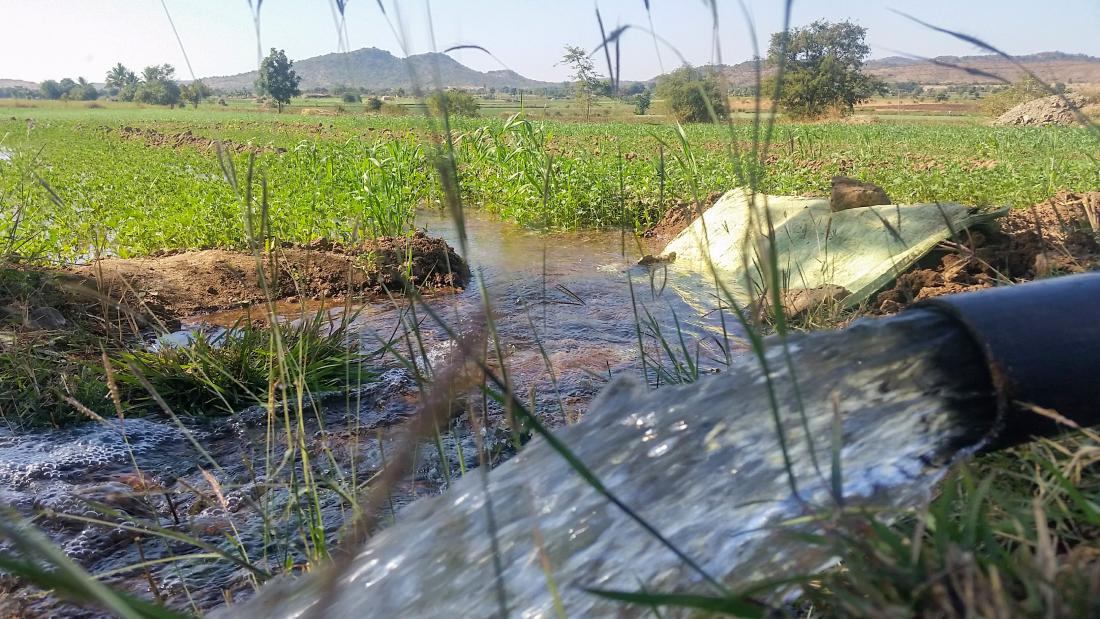Price Incentives for Groundwater Conservation in India
- Rural population
- Climate change
- Incentives
With climate change progressing, groundwater is becoming an increasingly vital input to agriculture worldwide, but a widespread lack of effective regulation or pricing often leads to its overconsumption, misallocation, and depletion. Researchers partner with a rural development organization to evaluate financial incentives for voluntary groundwater conservation among smallholder farmers in Gujarat, India.
Policy issue
Groundwater is a vital input to agriculture worldwide, especially as climate shifts and droughts become more common. With climate change progressing, water sources such as precipitation and surface water are becoming scarcer, with negative implications for people’s wellbeing and revenue from agriculture. In addition to increasing water scarcity, groundwater overconsumption reduces water availability for others today and in the future, which may increase poverty and conflict and exacerbate drops in farm income, wealth, and employment. Thus, effective groundwater management is becoming an urgent means for rural communities to adapt to climate change. Can financial incentives for groundwater conservation encourage farmers to practice water conserving behaviors?
Context of the evaluation
Groundwater is an important source for India’s rural and urban domestic water supplies1. Effective groundwater management in India is thus crucial to building resilience to shocks in temperatures and rainfall patterns. Reducing groundwater overuse can also play a part in mitigating climate change, as groundwater pumping and irrigation is estimated to contribute 6 to 25 percent of India’s total carbon footprint.
Gujarat’s Saurashtra region is a water-scarce area facing declining groundwater levels. Farmers in the area primarily grow cotton, a crop that requires large amounts of water and energy to cultivate, and that is highly vulnerable to climate change. The majority of farmers participating in the study own fewer than two hectares of land and live on less than US$52 per day.
Groundwater pumping in Gujarat relies on electricity subsidies needed to power the equipment for water extraction. While removing subsidies may not be equitable or feasible, researchers explore alternative ways to encourage water conservation while maintaining financial support to rural communities.
Researchers work with the Aga Khan Rural Support Programme–India (AKRSP-I), an established rural development organization working in Gujarat, Bihar, and Madhya Pradesh.

Details of the intervention
Researchers are partnering with the AKRSP to evaluate the impact of offering financial incentives for voluntary groundwater conservation to smallholder farmers in Gujarat on irrigation and water pumping behavior.
Researchers randomly assign 1,600 smallholder farmers in Gujarat’s Saurashtra region to receive incentives to conserve water during three months of the main irrigation season. Farmers in all groups have their cumulative hours of irrigation recorded with a meter which is installed on the pump of their primary irrigation source at the beginning of the main irrigation season. After the first month of measurement, farmers in intervention groups receive information about their ‘benchmark’: The number of hours farmers are expected to pump water per month based on the number of pumping hours during the first month of study. Farmers are randomly assigned to one of the following five groups:
- High Benchmark + High Price (275 farmers): Farmers receive a payment of 40 INR (US$0.55) per hour of water pumping conserved up to a monthly pumping limit3 of 125 percent of their benchmark quantity from the first month of measurement.
- High Benchmark + Low Price (275 farmers): Farmers receive a payment of 20 INR (US$0.27) per hour of water pumping conserved up to a monthly pumping limit of 125 percent of their benchmark quantity.
- Low Benchmark + High Price (275 farmers): Farmers receive a payment of 40 INR (US$0.55) per hour of water pumping conserved up to a monthly pumping limit of 75 percent of their benchmark quantity.
- Low Benchmark + Low Price (275 farmers): Farmers receive a payment of 20 INR (US$0.27) per hour of water pumping conserved up to a monthly pumping limit of 75 percent of their benchmark quantity.
- Comparison Group (1100 farmers): Farmers do not receive price incentives or information on their benchmark.
Researchers measure the duration of pump operation during each month, and collect data on water consumption, energy consumption, and CO2 emissions. They will also measure agricultural production, income, and groundwater levels.
Farmers who choose not to conserve water experience no negative consequences from the study. One possible consequence of water conservation is reduced crop yields, but this is a well-informed choice as participants are knowledgeable about irrigation requirements. All participants receive a small payment as compensation for keeping the water meter connected.
Results and policy lessons
Research ongoing; results forthcoming.
https://www.worldbank.org/en/news/press-release/2020/02/17/improving-groundwater-management-india
US$5 as measured by purchasing power parity: A measure adjusting the value for the local living costs.
Farmers exceeding the monthly pumping threshold retain water access but are no longer eligible to receive incentive payments.
